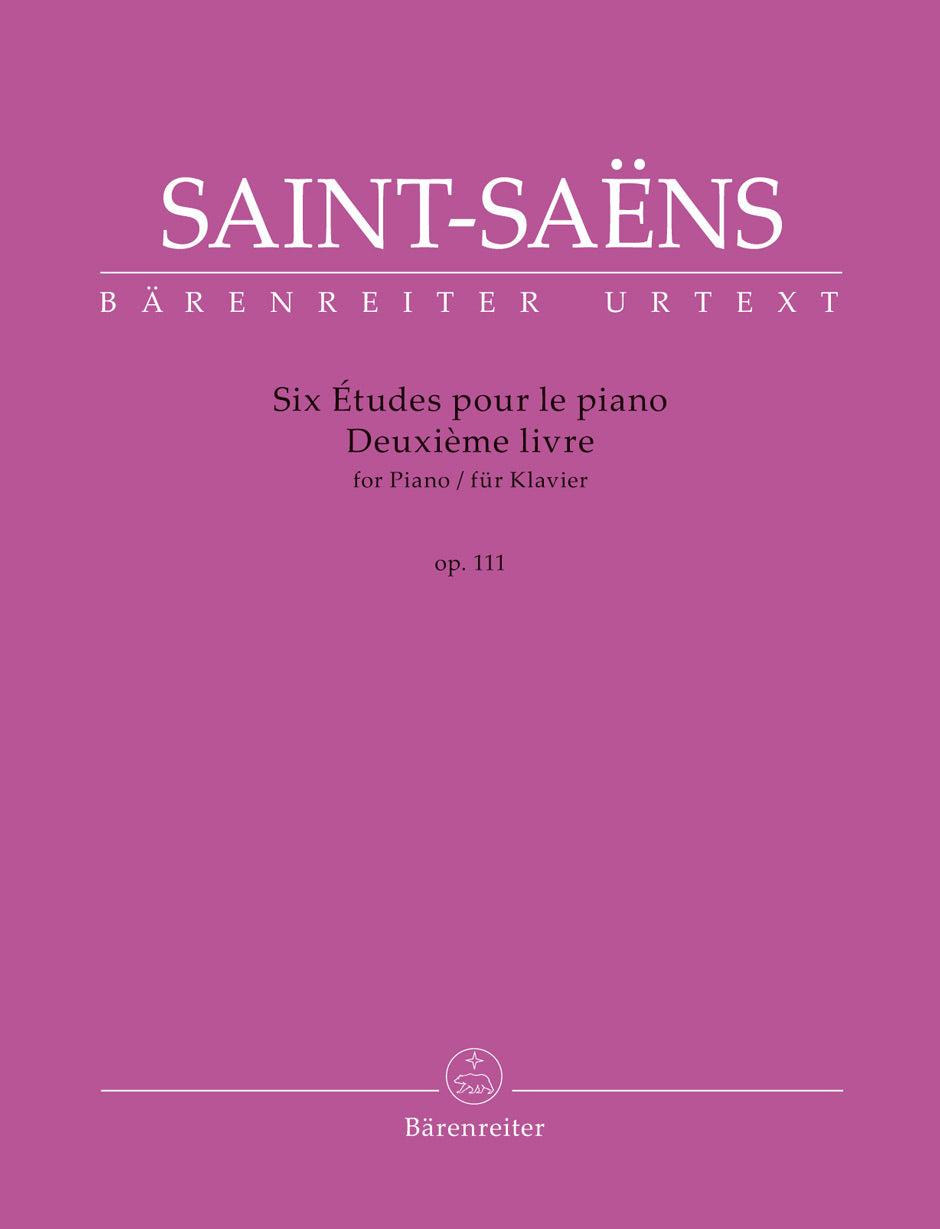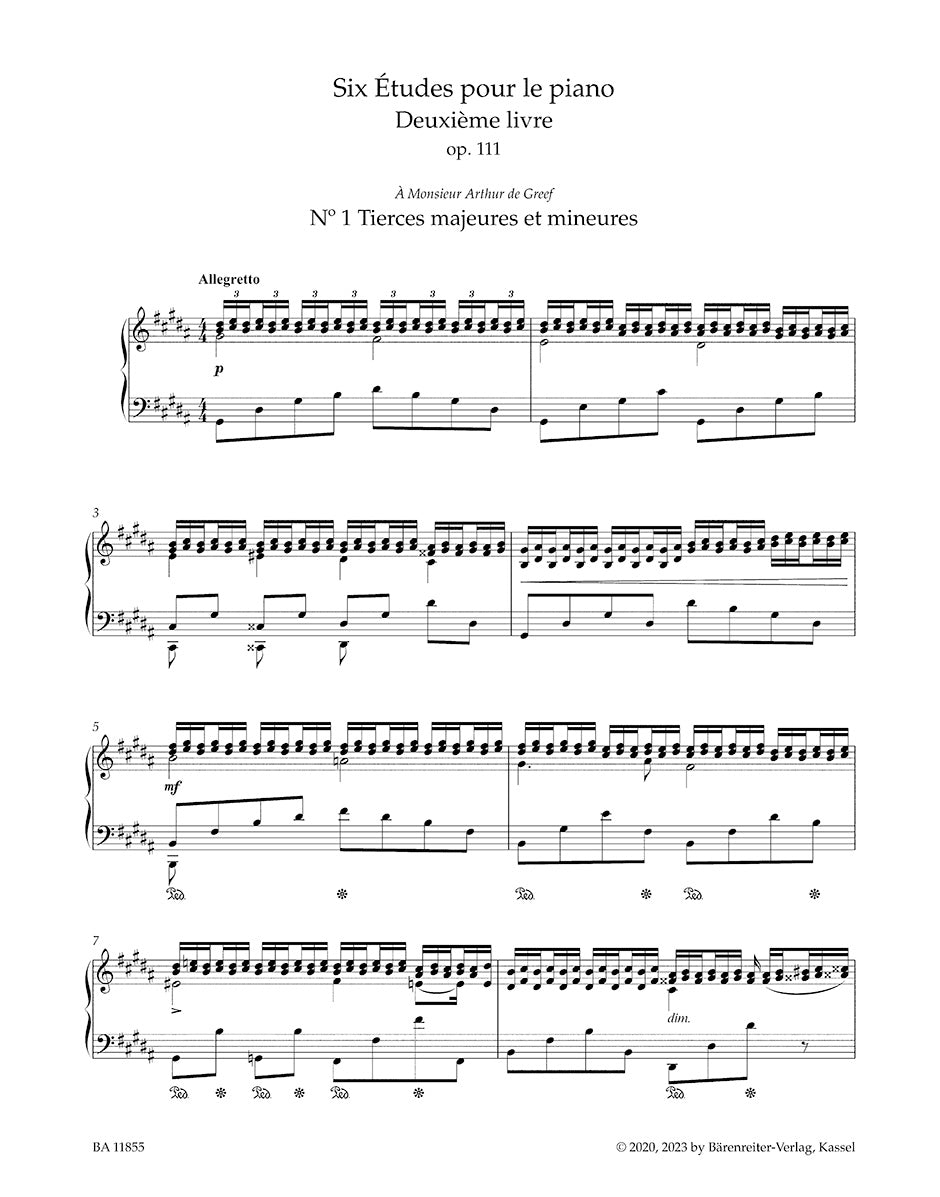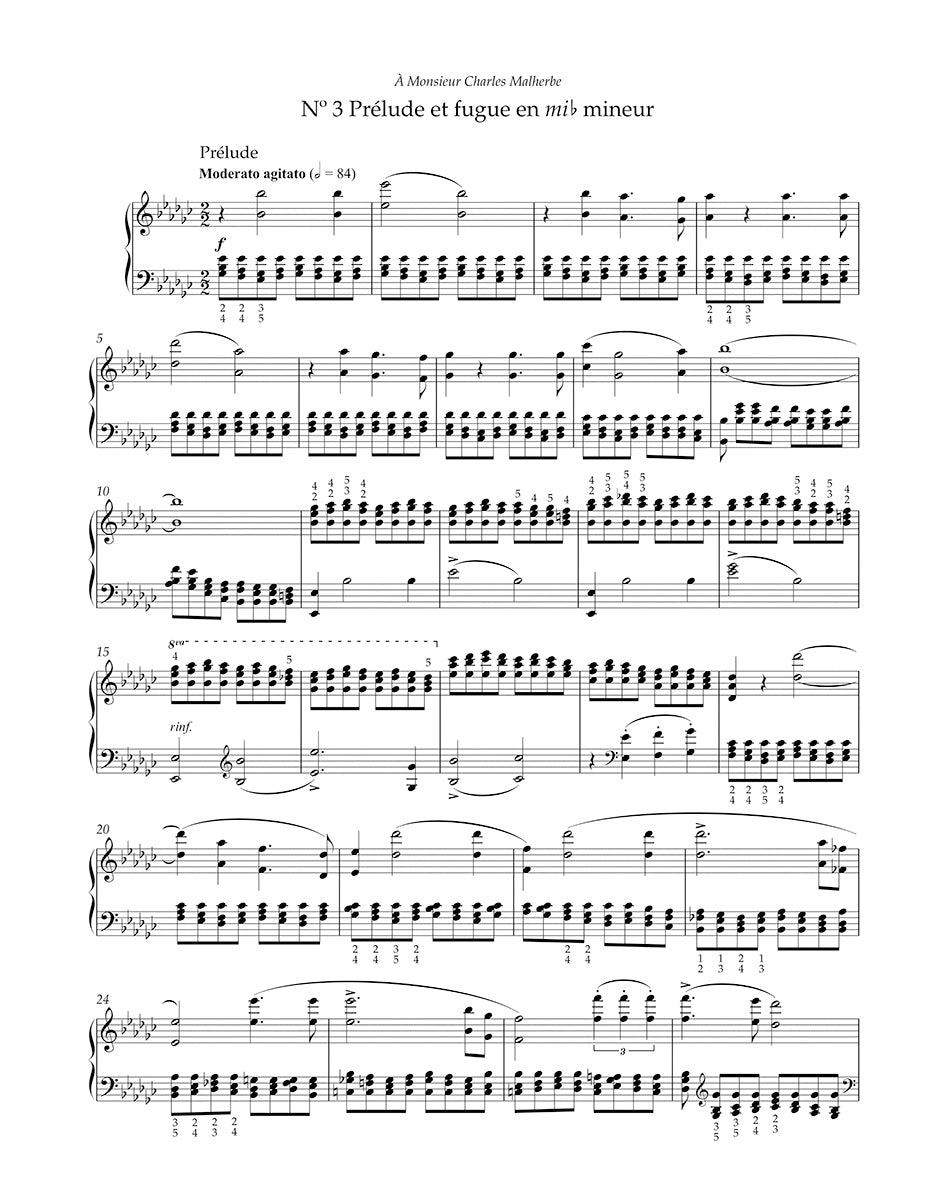Saint-Saëns: Six Études for Piano, Op. 111, R 49
Deuxième livre
In stock and typically ships within 1 business day.
- Composer: Camille Saint-Saëns (1835-1921)
- Editor: Catherine Massip
- Instrumentation: Piano
- Work: 6 Études, Op. 111, R 49
- ISMN:
- Size: 9.6 x 12.2 inches
- Pages: 43
- Urtext / Critical Edition
Description
More than 20 years after, Op. 52, Saint-Saëns turned once more to the genre of the concert etude. in 1892, he wrote an etude that was initially intended for publication in a magazine and later was to become etude No. 1. However, on the advice of his publisher Durand, the composer refrained from publishing it individually and wrote a further five etudes by 1898 to complete a new collection. The dedications are mainly intended as a thank you to pianists who were committed to the performance of his piano music, including Arthur De Greef, Raoul Pugno and Édouard Risler. Shortly after the publication of the edition in 1899, Pablo Sarasate arranged the impressionistic-sounding etude "Les Cloches de Las Palmas" for solo violin and Risler the last two pieces (Tierces majeures chromatiques, Toccata) for two pianos.
The new Urtext editions are based on the ground-breaking musical text of the "Œuvres instrumentales complètes" by Camille Saint-Saëns, for which the editor has meticulously evaluated all known sources. A detailed Foreword provides information on the genesis and significance of the etudes. Readings and variants are precisely documented in the Critical Commentary (Eng). Notes on interpretation (Fr/Eng/Ger) as well as an elegant music engraving provide the pianist with optimal conditions for studying these virtuosic etudes.
Publishers use a lot of words to describe what they sell, and we know it can be confusing. We've tried to be as clear as possible to make sure you get exactly what you are looking for. Below are descriptions of the terms that we use to describe the various formats that music often comes in.
Choral Score
A score for vocalists that only contains the vocal lines. The instrumental parts are not there for reference. Generally, cheaper than a vocal score and requires multiple copies for purchase.
Facsimile
Reproductions of the original hand-written scores from the composer.
Full Score
For ensemble music, this indicates that the edition contains all parts on a single system (there are not separate parts for each player). In larger ensembles, this is for the conductor.
Hardcover
Hardbound. Generally either linen-covered or half-leather.
Orchestral Parts
Similar to a wind set, this is a collection of parts. In the case of strings, the numbers listed are the number of copies included, though generally these are available individually (often with minimum quantities required).
Paperback
When publishers offer multiple bindings (e.g. hardcover) or study scores, this is the "standard" version. If you're planning to play the music, this is probably what you want.
Performance / Playing Score
A score of the music containing all parts on one system, intended for players to share. There are not separate parts for each player.
Set of Parts
For ensemble music, this indicates that there are separate individual parts for each player.
Solo Part with Piano Reduction
For solo pieces with orchestra, this is a version that contains a piano reduction of the orchestra parts. For piano pieces, two copies are typically needed for performance.
Study Score
A small (think choral size) copy of the complete score meant for studying, and not playing. They make great add-ons when learning concertos and small chamber works.
Vocal Score
A score prepared for vocalists that includes the piano/organ part or a reduction of the instrumental parts.
Wind Set
For orchestral music, this is a collection of wind and percussion parts. The specific quantities of each instrument are notated.
With Audio
In addition to the printed music, the edition contains recordings of the pieces. This may be an included CD, or access to files on the internet.
With / Without Fingering (Markings)
Some publishers prepare two copies - a pure Urtext edition that includes no fingering (or bowing) suggestions and a lightly edited version that includes a minimal number of editorial markings.





